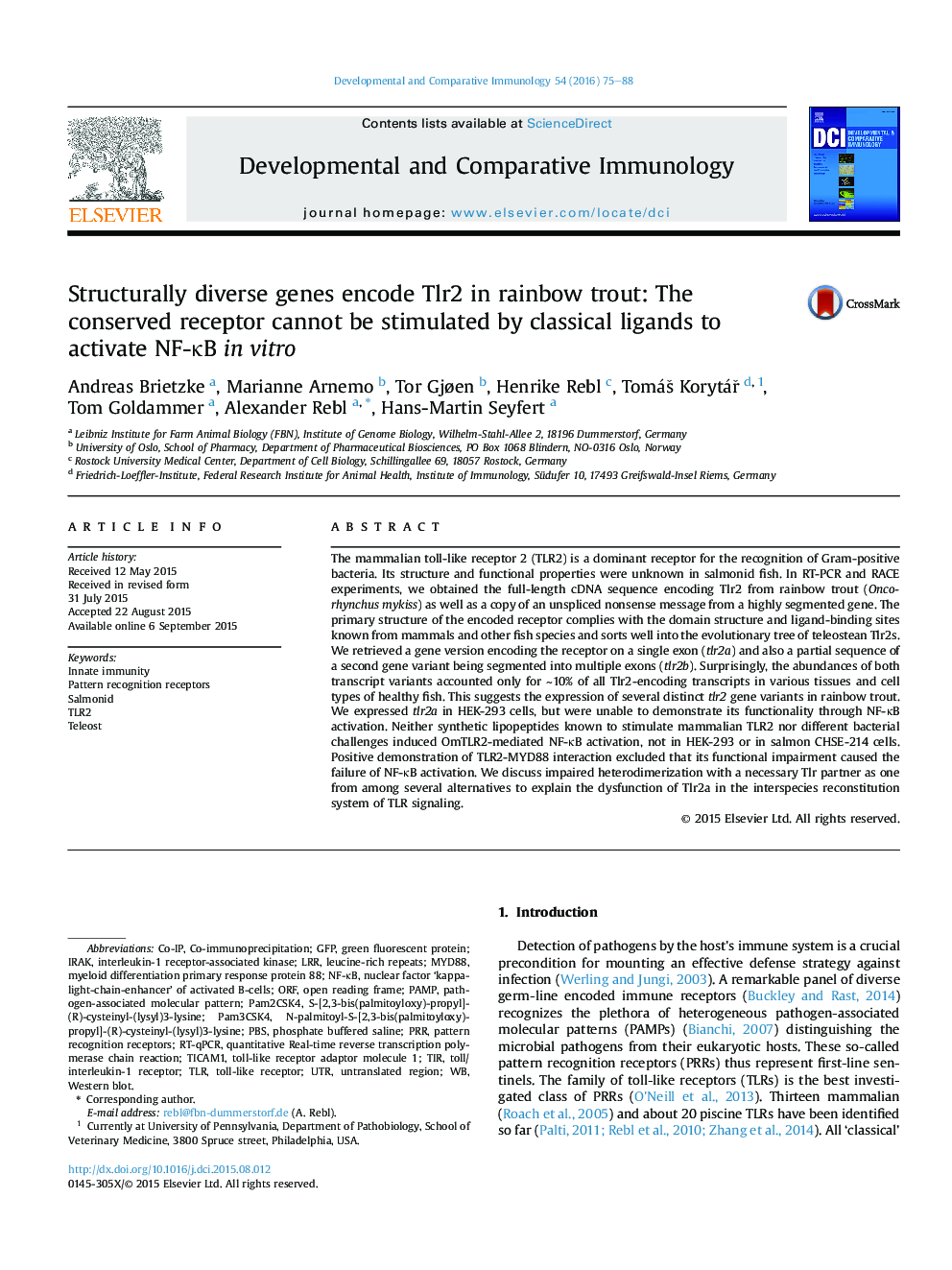| کد مقاله | کد نشریه | سال انتشار | مقاله انگلیسی | نسخه تمام متن |
|---|---|---|---|---|
| 2428919 | 1106461 | 2016 | 14 صفحه PDF | دانلود رایگان |

• Tlr2 is encoded in Oncorhynchus mykiss by segmented and non-segmented genes.
• Trout Tlr2 domain structure and ligand-binding sites are evolutionarily conserved.
• Classical TLR2 ligands failed to activate Tlr2 signaling in HEK293 and CHSE214 cells.
• Impaired Tlr2 heterodimerization might cause Tlr2 dysfunction in interspecies settings.
The mammalian toll-like receptor 2 (TLR2) is a dominant receptor for the recognition of Gram-positive bacteria. Its structure and functional properties were unknown in salmonid fish. In RT-PCR and RACE experiments, we obtained the full-length cDNA sequence encoding Tlr2 from rainbow trout (Oncorhynchus mykiss) as well as a copy of an unspliced nonsense message from a highly segmented gene. The primary structure of the encoded receptor complies with the domain structure and ligand-binding sites known from mammals and other fish species and sorts well into the evolutionary tree of teleostean Tlr2s. We retrieved a gene version encoding the receptor on a single exon (tlr2a) and also a partial sequence of a second gene variant being segmented into multiple exons (tlr2b). Surprisingly, the abundances of both transcript variants accounted only for ∼10% of all Tlr2-encoding transcripts in various tissues and cell types of healthy fish. This suggests the expression of several distinct tlr2 gene variants in rainbow trout. We expressed tlr2a in HEK-293 cells, but were unable to demonstrate its functionality through NF-κB activation. Neither synthetic lipopeptides known to stimulate mammalian TLR2 nor different bacterial challenges induced OmTLR2-mediated NF-κB activation, not in HEK-293 or in salmon CHSE-214 cells. Positive demonstration of TLR2-MYD88 interaction excluded that its functional impairment caused the failure of NF-κB activation. We discuss impaired heterodimerization with a necessary Tlr partner as one from among several alternatives to explain the dysfunction of Tlr2a in the interspecies reconstitution system of TLR signaling.
Figure optionsDownload high-quality image (97 K)Download as PowerPoint slide
Journal: Developmental & Comparative Immunology - Volume 54, Issue 1, January 2016, Pages 75–88